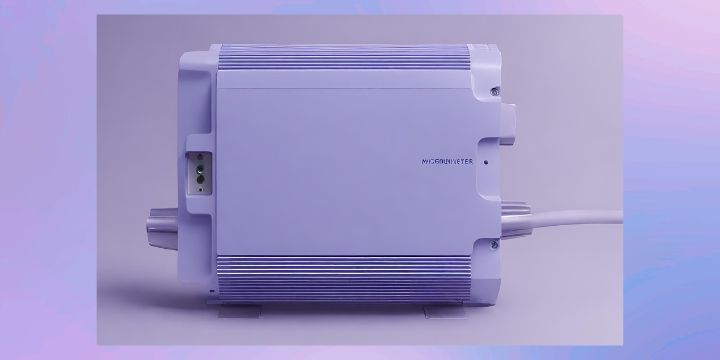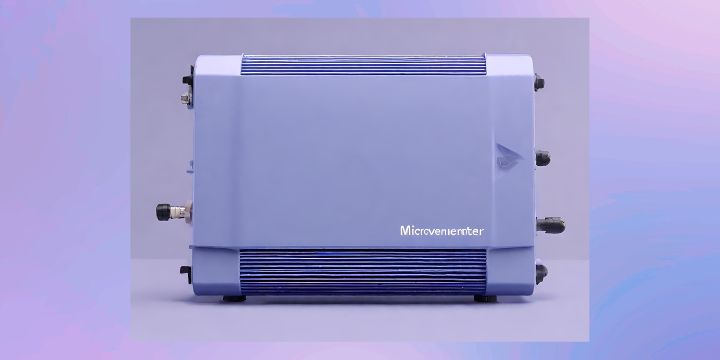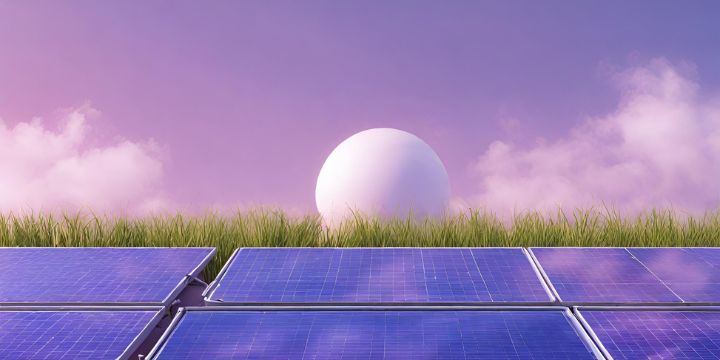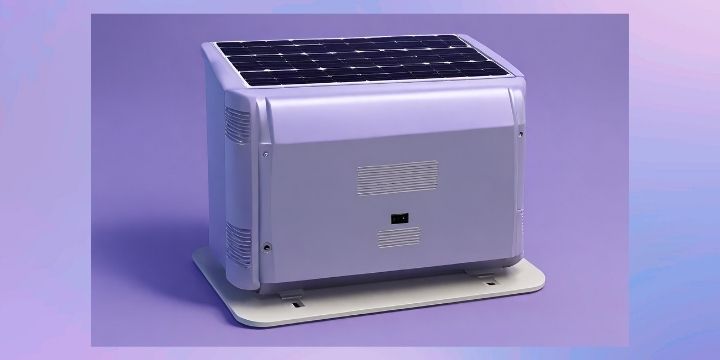Thin-Film Solar Panels: How They Work, Pros & Cons
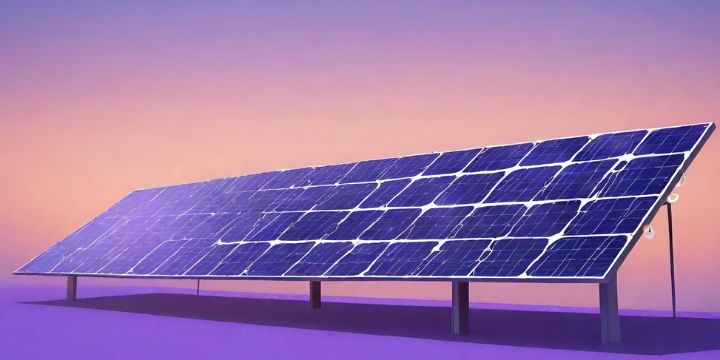
What Are Thin-Film Solar Panels?
Thin-film solar panels are photovoltaic solar panels made from thin layers of semiconductor materials deposited on a low-cost substrate, like glass or flexible plastics. They are a lightweight, space-efficient alternative to traditional silicon solar panels.
The active materials used in thin-film solar panels are typically amorphous silicon (a-Si), cadmium telluride (CdTe), or copper indium gallium selenide (CIGS). These thin layers of materials, ranging from a few nanometers to micrometers thick, absorb light and generate an electric current.
Compared to crystalline silicon panels, thin-film solar panels:
Reliable Power Anywhere
Experience the freedom of portable power with Bluetti's cutting-edge solar generators and power stations. Whether you're camping, preparing for emergencies, or reducing your reliance on the grid, Bluetti offers reliable, eco-friendly solutions that keep you powered up anywhere.
Explore Bluetti Products Now- Tend to be less efficient at converting sunlight into electricity (typically 5-13% vs 15-20% for silicon)
- Often degrade faster over time
- Usually require more space to produce the same amount of power
However, thin-film solar panels also have significant benefits:
- They are more lightweight, flexible, and portable
- They perform better in low light and high heat
- They are often cheaper to manufacture
- They have a smaller environmental impact during production
For certain applications where space or weight are limited, such as building-integrated photovoltaics, vehicle-integrated photovoltaics, or portable chargers, thin-film solar panels can be an excellent choice despite their lower efficiency.
How Thin-Film Solar Panels Work
Thin-film solar panels work by converting sunlight into electricity using semiconducting materials that exhibit the photovoltaic effect.
When sunlight strikes certain materials, such as silicon, it knocks electrons loose from their atoms. This results in the creation of free electrons and holes (positive charges). The electrons and holes flow in opposite directions towards positive and negative terminals, creating an electric current known as the photovoltaic effect.
Go Green with Bluetti
Take a step towards sustainability with Bluetti’s advanced solar technology. From high-capacity power banks to efficient solar panels, Bluetti helps you harness the power of the sun to reduce your carbon footprint without compromising on performance.
Shop Sustainable Power SolutionsLayers of Thin-Film Solar Panels
Each thin-film solar cell contains several ultra-thin layers of semi-conducting materials, typically only a few micrometers thick, deposited onto a substrate like glass or plastic. The layers include:
- A transparent conductive oxide layer that lets light through while conducting electricity.
- A p-type semiconductor layer with positive charge carriers.
- An n-type semiconductor layer with negative charge carriers.
- Metal contacts that collect the electrical current.
When light energy strikes the semiconductor layers, it frees electrons and holes which then flow through the layers and out the metal contacts, producing electricity. Multiple cells are connected together to form thin-film solar panels.
Advantages of Thin-Film Solar Panels
Thin-film solar panels offer several advantages over traditional crystalline panels.
Cost Effective
Thin-film solar panels are approximately 30% less expensive than crystalline panels. They require fewer raw materials to produce, reducing material costs. The streamlined manufacturing process also lowers production costs.
For homeowners and businesses on a budget, thin-film panels can lower the initial capital outlay for a solar installation.
Environmentally Friendly
Thin-film solar panels have a smaller carbon footprint and require less energy to manufacture compared to crystalline panels. They use little to no toxic heavy metals like cadmium or lead.
At the end of their lifespan, thin-film panels are easier to recycle due to fewer materials. For those concerned about sustainability and environmental impact, thin-film technology is an eco-friendly option.
Lightweight and Low Profile
Thin-film panels are lightweight, flexible, and can conform to the shape of a roof. They sit nearly flush with the surface, creating an unobtrusive, low-profile appearance.
Power Your Adventures
Don't let power outages or off-grid adventures slow you down! Bluetti's portable solar-powered solutions are designed for convenience and efficiency, making them the perfect companion for any lifestyle.
Discover Bluetti's Portable PowerThis makes them ideal for residential installations where esthetics are a concern or in situations where a roof cannot support the weight of crystalline panels. The lightweight, flexible panels are also well-suited for applications like building facades, vehicles, and portable power devices.
Durability
While early thin-film panels had lower efficiencies and faster degradation rates, modern panels are catching up to crystalline panels. Advancements in technology and materials have improved panel durabilities of 20-25 years.
For residential and commercial customers, newer thin-film products can have similar lifespans to traditional panels at a lower overall cost.
Disadvantages of Thin-Film Solar Panels
Thin-film solar panels have some significant disadvantages compared to traditional solar panels that should be considered before installation.
Low Energy Conversion Efficiency
Thin-film solar panels have lower space efficiency ratings, often between 7% to 13%, compared to 15% to 20% for traditional solar panels. The lower efficiency means more surface area is required to produce the same amount of energy.
Additional space requirements lead to higher costs for mounting structures and hardware to support the panels.
Shorter Lifespan and Warranties
Thin-film solar panels typically have shorter lifespans of 15 to 20 years compared to 25 to 30 years for traditional panels. They also usually come with shorter product warranties of 5 to 10 years.
The shorter lifespan means thin-film panels will need to be replaced sooner, incurring additional costs.
Higher Temperature Sensitivity
Thin-film solar panels are more sensitive to high temperatures which can reduce their energy output. As panel temperature rises, the voltage and current output decrease more dramatically than in traditional panels.
Installations in hot climates may experience greater energy loss from the temperature sensitivity. Additional equipment like solar trackers may be needed to keep panels at an optimal angle to the sun.
Not Ideal for Small-Scale Use
The lower efficiency and energy output of thin-film solar panels generally make them unsuitable for small-scale residential use where space is limited.
They are better suited for large commercial or utility-scale projects where there is ample area for installation to overcome the lower efficiency. For most homes, the higher efficiency of traditional panels leads to a better return on investment.
Where to Install Thin-Film Solar Panels
Thin-film solar panels can be installed almost anywhere that receives adequate sunlight exposure. Some of the most common and ideal locations for thin-film panel installation include:
Rooftops
Rooftop installation is one of the most popular options for thin-film solar panels. Panels can be mounted flush with the slope of the roof or at an angle for maximum sun exposure.
Roof installation does not require any additional space and the panels are not visible from ground level. However, the roof must have proper structural support and orientation for optimal energy production.
Ground mounts
For those without suitable roof space, ground-mounted solar panel arrays are an excellent alternative. Panels are mounted at an angle on poles embedded in concrete foundations.
Ground mounts require adequate space but panels can be oriented for maximum sun exposure. Regular mowing and trimming may be required to avoid shading panels.
Carports
Thin-film panels can also be installed on carport structures to provide shade for vehicles while generating electricity.
Carports require proper installation and wiring but take advantage of space that is already in use.
They also provide protection for the panels and vehicles from weather and environmental exposure.
Pergolas
For residential use, thin-film solar panels can be installed on pergola structures. Pergolas provide shade and protection for an outdoor space while allowing the panels to receive plenty of sunlight for energy production.
However, pergolas may require reinforcement to properly support the weight of the panels.
Facades
Some thin-film panels are designed for installation on vertical facades, like exterior building walls. Facade installation takes advantage of unused wall space and the panels can provide insulation as well as electricity generation.
However, facade mounts may require custom panel shapes and orientations to maximize exposure and work with the building’s architecture.
Disclosure: We may earn commission for purchases that are made by visitors on this site at no additional cost on your end. All information is for educational purposes and is not intended for financial advice. Read our affiliate disclosure.

